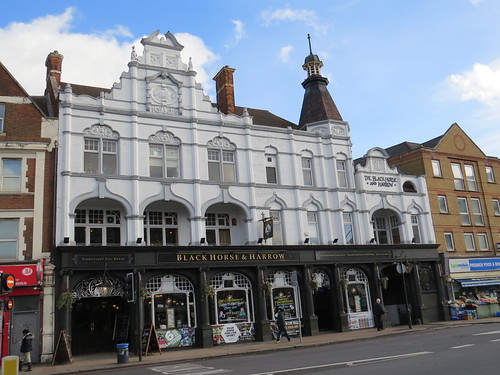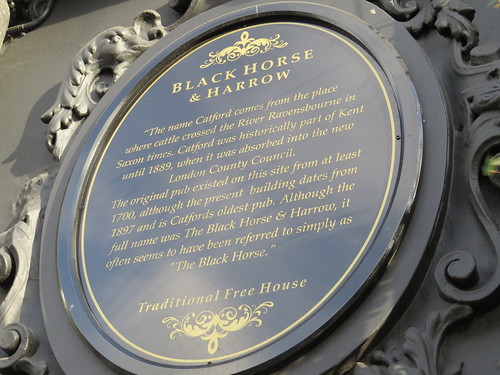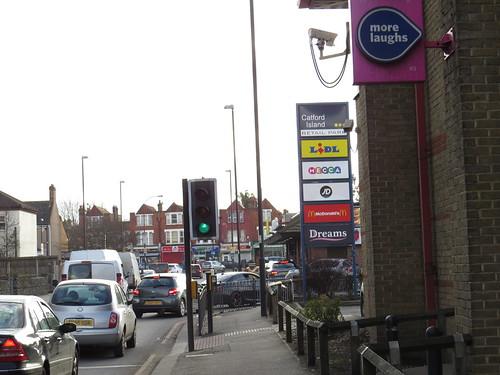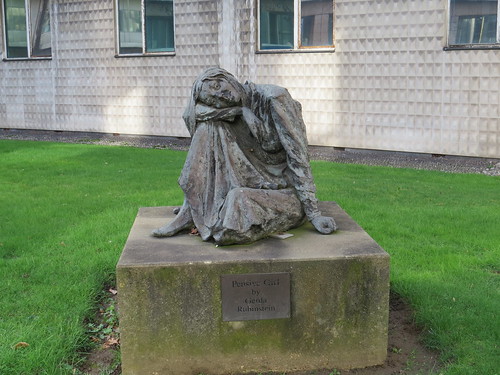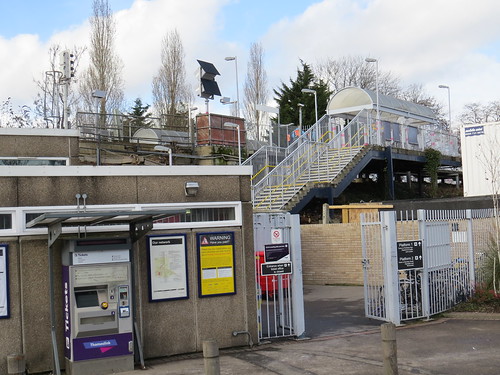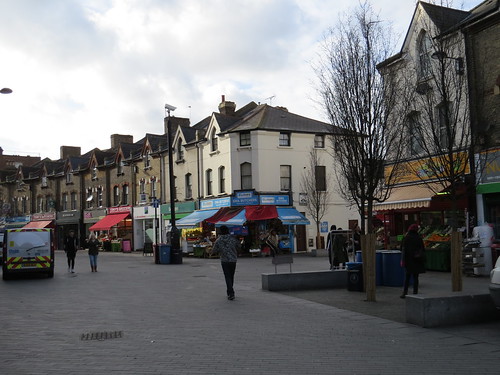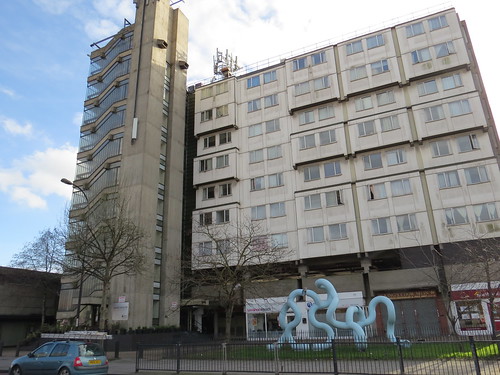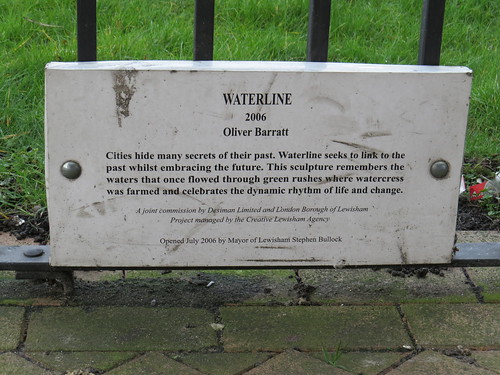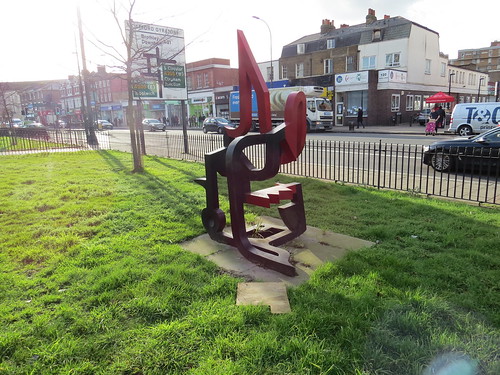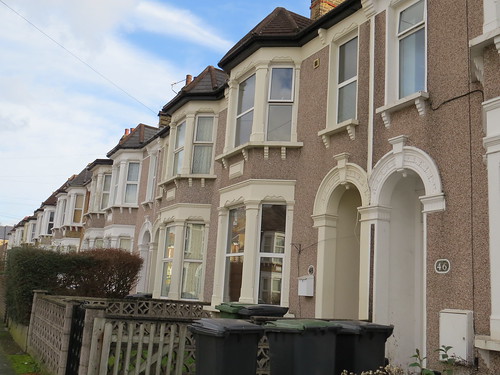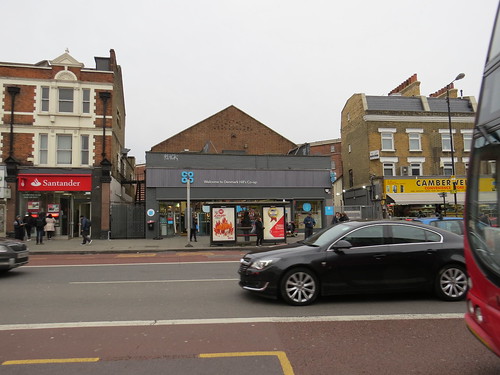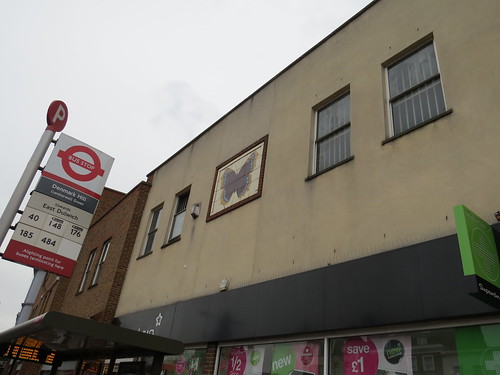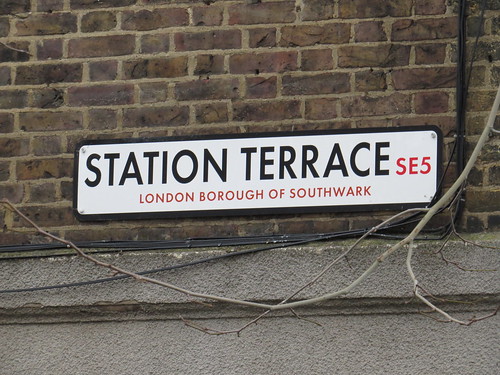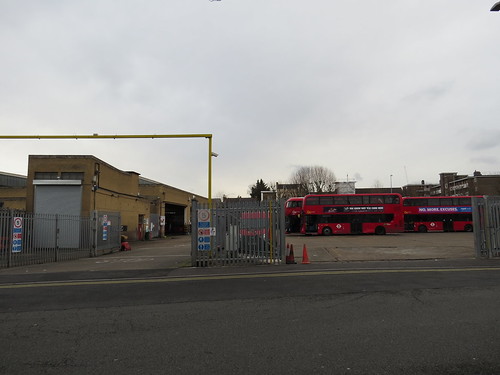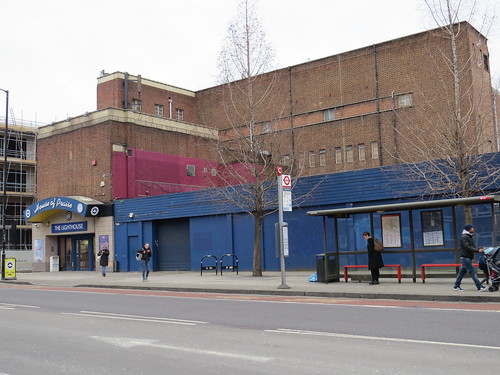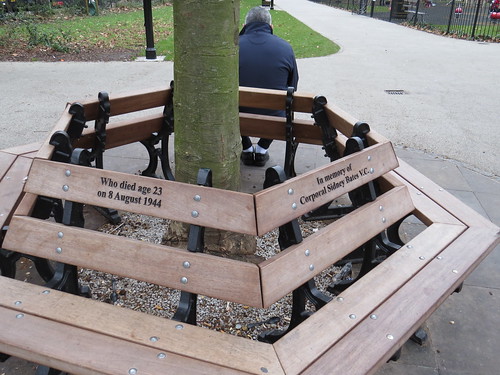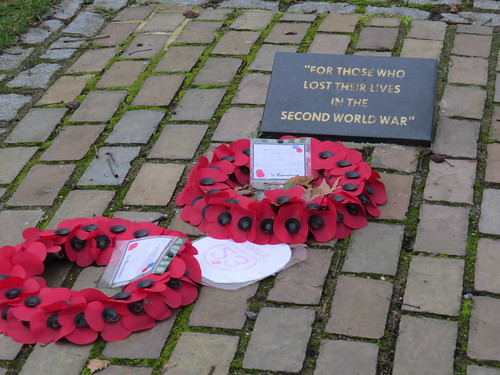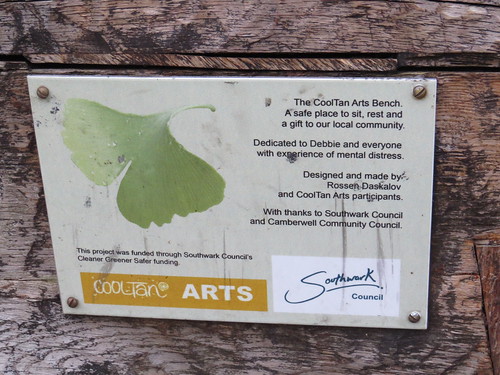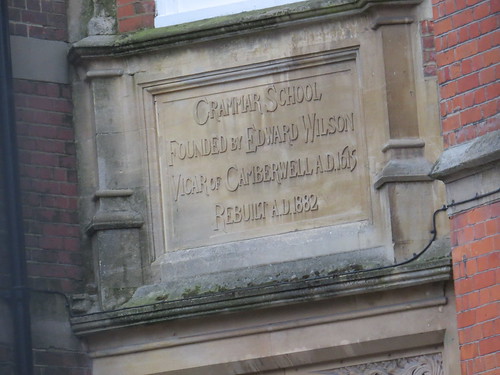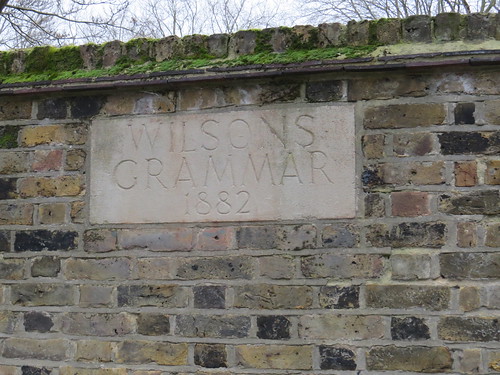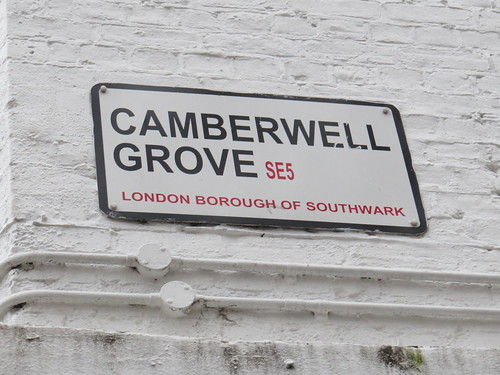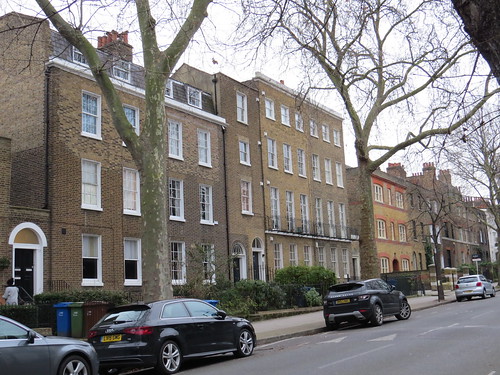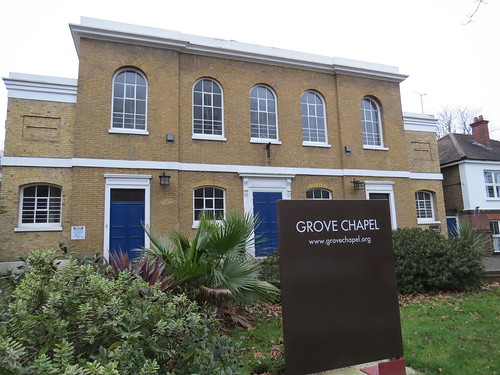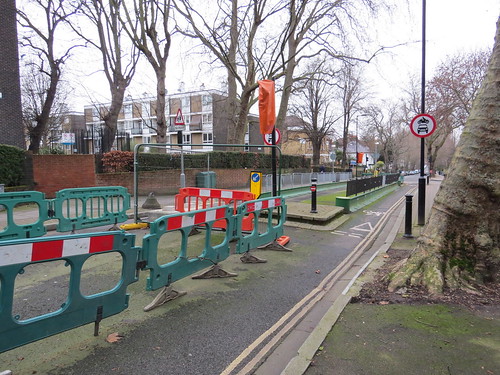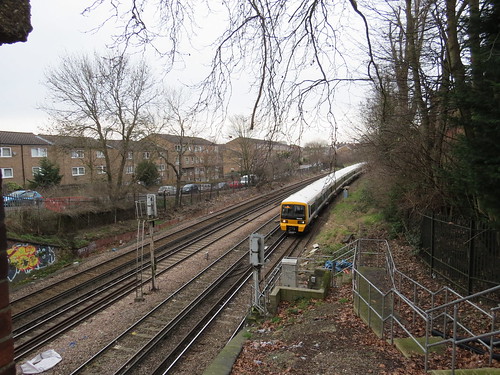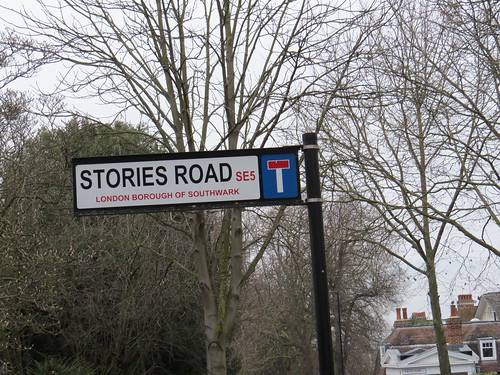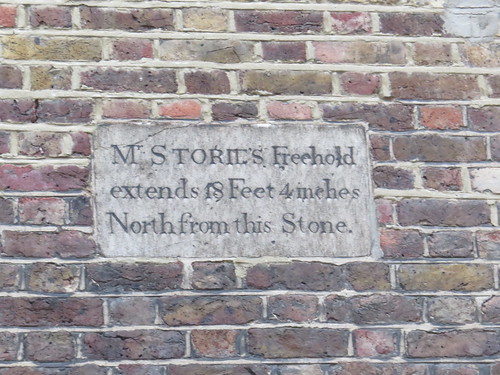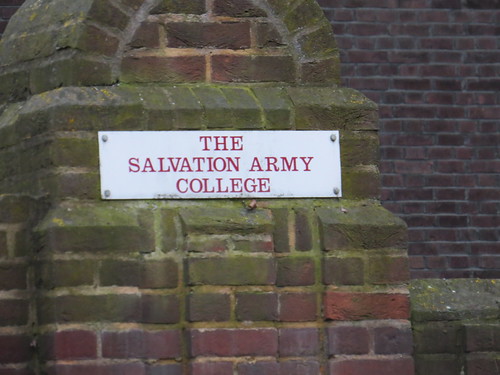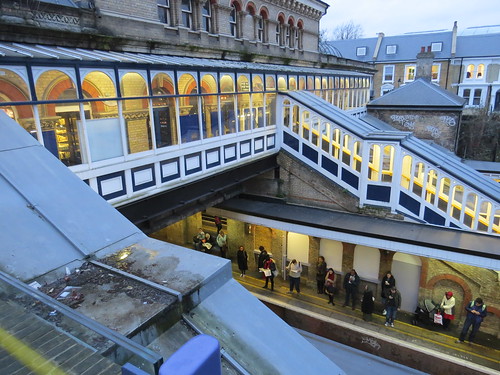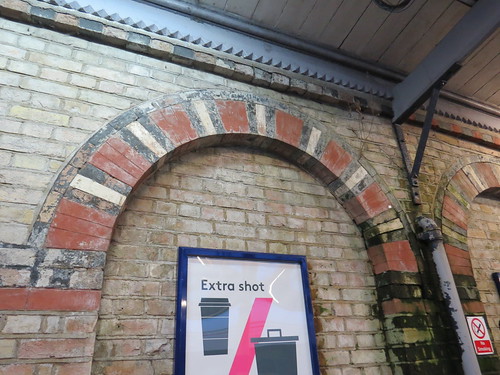SE6 is Catford. Brewer’s Dictionary of London Phrase and Fable says of Catford: “Perhaps surprisingly, the name is not some arcane corruption , but probably does mean that wild cats did frequent the ford that is now the site of Catford bridge, although an alternative explanation is that “the cat” was a local landowner’s nickname.
Wikipedia has other suggestions including this is “the place where cattle crossed the River Ravensbourne in Saxon times” and goes on to say”. It is also said that the name originates from all-black cats, associated with witchcraft, being thrown into the ford to drown during the witch hunts.” Sadly neither of these assertions are backed up by citations.
We start our walk at Catford Post Office which in Numbers 187-189 Rushey Green. Turn right out of the Post Office and our first stop is a little way along the same pavement.
Stop 1: The Black Horse and Harrow pub
This is a grand Victorian pub called the Black Horse and Harrow.
It dates from 1897 and the sign says there has been a pub here since at least 1700.
It would have been a coaching inn on the road to Tonbridge and Hastings, but clearly became a bit of a Victorian “gin palace”
Now retrace your steps and go down the alleyway which runs through Octavia house.
On the other side you will be in the middle of Catford Island, our next stop..
Stop 2: Catford Island
Catford Island is possibly one of the most inappropriate bits of development to grace the streets of London.
Who thought it would be a good idea to put an american style retail centre here where the inadequate A21 London – Hastings road crosses the even more inadequate South Circular Road. Needless to say this is what you get.
Many years ago there were plans to sort out the roads here properly but there are no active plans for this.
The Lewisham website has something called “The Catford Plan”. Here is a link to the Frequently asked questions: https://www.lewisham.gov.uk/myservices/planning/policy/LDF/catford/Pages/Catford-Plan-frequently-asked-questions.aspx
One of which is:
“Has the Council given up on the plans to re-route the South Circular behind the Laurence House?
Transport for London (TfL)’s long-standing proposal, which would potentially remove the Catford gyratory, still has no clear timetable or funding strategy. There are reasons why this project has not happened, primarily that it would be complex, expensive and difficult to implement.
The Catford plan therefore includes alternative proposals which would be more deliverable. These include simplifying pedestrian crossings, improving the Thomas Lane/Catford Road and Rushey Green/Catford Road junctions, and widening Sangley Road to create an eastbound bus lane to cut the number of northbound buses on Rushey Green.”
So this bottleneck is not going to be sorted out any time soon.
Now head to the opposite side of the retail park from the Bingo club and turn right along that road. Our next stop is at the corner.
Stop 3: former ABC cinema
This was the Central Hall Picture House when it opened in December 1913. It was renamed the Plaza in 1932 and was taken over the ABC chain in 1937. It was renamed ABC in 1962. It was split into two screens in 1981 and continued to operate as a cinema until 2001.
According to the wonderful “Cinema Treasures” website “In 2002, it was purchased by the Brazilian based Universal Church of the Kingdom of God, who also purchased the former Granada/EMD in Walthamstow, and who already operated the former Astoria Finsbury Park” (aka the Rainbow).
They were refused planning permission to convert the Catford cinema in 2003. The case at Catford went to a Public Enquiry in 2005, which allowed the church to use the former stalls area, on the proviso they let out the former circle as a 200 seat cinema. Not sure what happened this idea as the cinema treasures site does not have any up to date info. No sign of a cinema. However the church is certainly operating here.
Now cross over Sangley Road, go past the Post Office and you will see our next stop just over the road on the left.
Stop 4: Broadway Theatre
This is a little gem of a 1930s building adjoining the modern civic suite.
The Theatre’s website says:
“A grade II* listed building, the theatre was built in 1932 and is an example of Art Deco design. The architects were Bradshaw Gass & Hope; the slightly Gothic features were intended to relate to the adjacent Gothic Revival Town Hall which has since been demolished.
It has two auditoriums, an 800-seat main theatre and a small 80-seat studio theatre. Its programme consists of a diverse mix of theatre and music, including a pantomime season featuring star names, stand up comedy, nostalgia shows, drama and children’s theatre.”
For many years it was called the Lewisham Theatre which was somewhat confusing as it was in Catford.
Broadway is a better name although it has the disadvantage that it is so generic a name it could be anywhere.
As you look at the theatre head to the left and our next stop is the building next door.
Stop 5: Civic Suite
The old Town Hall of 1875, was replaced by the current Civic Suite in 1968, soon after the merger of the metropolitan boroughs of Lewisham and Deptford to form the London Borough of Lewisham. On the other side of the road is Laurence House, where many of the Lewisham Council offices are housed. That is on the site of old St Laurence’s Church.
Go into the courtyard of the Civic Suite and you will see a couple of plaques on your right.
These relate to a fire in New Cross which killed 13 young black people in January 1981. This plaque has 14 names because one person (Anthony Berbeck) who was in the house at the time of the fire, committed suicide later.
The way the authorities investigated the fire provoked a huge uprising in the black community. There was a strong view that the fire was caused deliberately but this could not be proved. Forensic science has developed since then. So while some still believe the fire to have been a result of arson, it seems that such evidence as there is suggests it was a tragic accident.
Over the years a number of memorials have been created, including a stained glass window in St Andrew’s Church Brockley (2002), a blue plaque from Nubian Jak Community Trust (January 2011), a stone memorial and bench in Fordham Park, Deptford (2012). There is also a memorial to the victims consisting of a park bench plus 13 trees with a plaque at either end on Hackney Downs. And of course this one.
And just opposite is the statue of a sad looking girl.
This statue is bronze and was commissioned by Lewisham Borough Council in 1992 from the artist Gerda Rubinstein.
Now keep walking along the main road and you will get to our next stop – the two railway stations in Catford. You will see a little access road to the right which is a good way into the first station you get to (Catford Bridge)
Stop 6: Catford’s stations
The two stations in Catford are almost side by side but on different lines, one line goes under the road whilst the other above the road. Interchange on one ticket is allowed between the two stations.
Catford Bridge station was built by the Mid-Kent and North Kent Junction Railway and opened in January 1857. But from the start the line was worked by the South Eastern Railway.
This still has original buildings although the main one does not seem to be used by the railway. This station is also unusual in having two exits from each platform – one on the level and one up steps to the road bridge.
The two stations are separated by the site of the former Catford Stadium. Although the stadium closed in 2003, and is currently being redeveloped, it is still mentioned on the direction signs here.
The other station has lost all its old building and has this rather nasty modular building as a ticket office and little more than a bus shelter on the platform.
Catford station was opened by the London, Chatham and Dover Railway in July 1892. This is the next station after Crofton Park going out of town and has an equally poor service.
Now retrace your steps and as you approach the Civic Buildings you will see a pedestrianised street to your left.
Stop 7: Catford Broadway
This sad looking street is called Catford Broadway.
It has a few stalls and some dull looking shops – and when I was there, not many people. But at least it was not run down and abandoned, as it so easily could have been.
Our next stop is at the end of Catford Broadway on the left.
Stop 8: Catford Shopping centre
This was designed by the architect Owen Luder (Born 1928) in 1974. He was well known for Brutalist architecture, with its massive bare concrete sculptural forms with no cladding and little or no decoration. Unfortunately time has not been kind to these buildings. In the damp British climate unclad concrete buildings soon become dull and greyer and they get streaked where rainwater runs. Often poor maintenance makes things worse.
But at least Catford Shopping centre is still standing unlike a number of Luder’s other well known projects, such as the Tricorn Centre in Portsmouth, Trinity Square Gateshead and the Southgate shopping centre in Bath.
The most prominent feature is the Catford Cat, a giant fibreglass sculpture of a black cat above the entrance.
Lewisham Council website credits the Catford Cat to Owen Luder and Embassy Signs with the date 1974.
The Catford Centre was bought by Lewisham council in 2010 for “regeneration”. But this does not seem to have happened yet.
Now cross over the road and have a look at the concrete building on the other side.
Stop 9: Eros House
This is called Eros House and was also designed by Owen Luder. It dates from 1960 and so is somewhat older than the Catford Centre. I am not sure that the proportions quite work. It would probably look better if the tower were taller. And it does not have the elegance of the Goldfinger buildings we saw in Poplar and Westbourne Park.
The site has an interesting history as it contained not one but two places of entertainment. As ever I am endebted to the “Cinema Treasures” site for much of the following information.
At the corner of Rushey Green and Brownhill Road was the Lewisham Hippodrome Theatre which opened as a variety theatre in February 1911. It was designed by renown theatre architect Frank Matcham. Again this must have been confusing given it was not in Lewisham, proper.
In the late 1920s and early 1930s it was sometimes used as a cinema and sometimes a theatre. In 1931 alterations were carried out by architect Cecil Masey, with interior decoration by designer Theodore Komisarjevsky. It reopened as a cinema in April 1931 but by 1933 was operating as a music hall, with films only shown on Sundays.
It was closed by bomb damage in 1940 and re-opened in 1943. It was closed as a live theatre in 1952 and re-opened as the Eros Cinema in May of that year. The Eros Cinema finally closed in November 1959
Adjacent to the Hippordome/Eros was a purpose built cinema. This opened in December 1913 as the Queen’s Hall Cinema. It was acquired by Gaumont in 1928 but continued operating as the Queen’s Hall Cinema until September 1954 when it was renamed Gaumont.
The Gaumont closed in November 1959. It was demolished in July 1960, together with the adjacent Eros/Hippodrome building. The office block named Eros House was built on the site.
On the green outside there is a sculpture.
This is called Waterline. It is by Oliver Barratt and dates from 2006
The sign says “This sculpture remembers the waters that once flowed though the green rushes where watercress was farmed and celebrates the dynamic rhythm of life and change” Here is a link to the artist’s website:
http://www.oliverbarratt.co.uk/water-line/
So it is also a little reminder of why the street here is called Rushey Green.
Stop 10: Rushey Green
And so just by Eros House is a green encased in railings with a water pump.
Not sure how old this is.
Just further along on the other side of Brownhill Road is this sculpture
It is called “Chariot / Blue on Green” and is by artist Oleg Prokofiev (1928 – 1998). It seems it was bequeathed by Prokofiev family.
Now walk along Rushey Green away from Catford centre. Take the second right which then splits into Farley Road and Honley Road. You want the former which is the left hand way.
Stop 11: Number 48 Farley Road
Our next stop is a fair way down Farley Road.
Number 48 was the childhood home of film actress Elsa Lanchester (1902 – 1986), who although she spent most of her career in Hollywood was actually from here in South London.
According to Wikipedia: “[She] studied dance as a child and after the First World War began performing in theatre and cabaret, where she established her career over the following decade. She met the actor Charles Laughton in 1927, and they were married two years later. She began playing small roles in British films, including the role of Anne of Cleves with Laughton in The Private Life of Henry VIII (1933). His success in American films resulted in the couple moving to Hollywood, where Lanchester played small film roles.
Her role as the title character in Bride of Frankenstein (1935) brought her recognition. She played supporting roles through the 1940s and 1950s. She was nominated for the Academy Award for Best Supporting Actress for Come to the Stable (1949) and Witness for the Prosecution (1957), the last of twelve films in which she appeared with Laughton. Following Laughton’s death in 1962, Lanchester resumed her career with appearances in such Disney films as Mary Poppins (1964), That Darn Cat! (1965) and Blackbeard’s Ghost (1968).” She also played a witch in the 1958 film “Bell, Book and Candle”
Our final stop is just a little way along the road.
Stop 12: Woskerski mural, Farley Road.
Just before you get to Laleham Road, there is a striking mural on the right.
This is by street artist Woskerski who describes himself as “A street artist based in London, painting since 1997.”
His website says that this particular mural is of Ray Charles and Louis Armstrong and it was a commission in 2016. It is a little surprising to see this looming up at you in a side street in Catford. I somehow doubt that either Ray Charles or Louis Armstrong had any connection with this part of London, so who knows why someone chose them as the subject of a mural here.
Now we are the end of our walk. But I thought I should just point out a couple of old street signs here. Just beyond the mural, Laleham Road crosses Farley Road and unusually for this part of town there are two signs which are what must be the original signs, as they say just SE without the number.
There are lots of these old street signs in the borough of Wandsworth but most other boroughs have systematically replaced them with their own branded street name plates.
So Catford proved to have some interest. Again it seems odd that this was once a significant entertainment centre. There were four theatre/cinema buildings in close proximity up until the late 1950s. But today it is a dull collection of shops with constantly congested gyratory system, and just one working theatre building.
You have a choice about onward travel from here. you can retrace your steps back to the stations or else go back to Rushey Green and jump on one of numerous buses that will take you to Lewisham.

